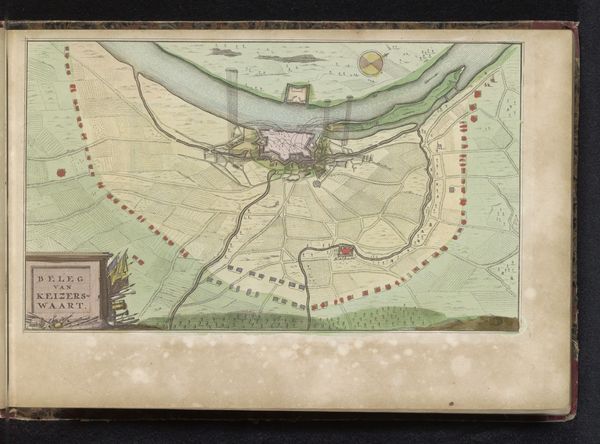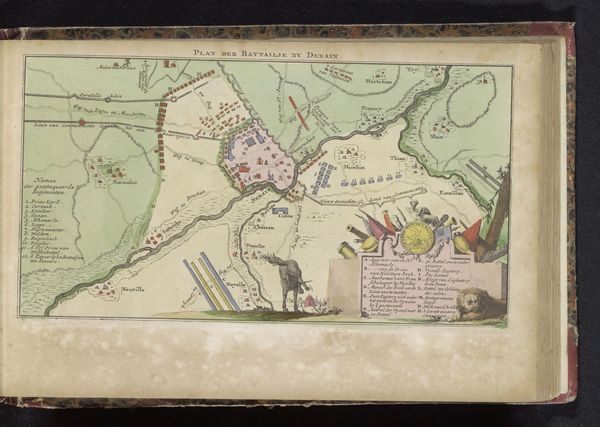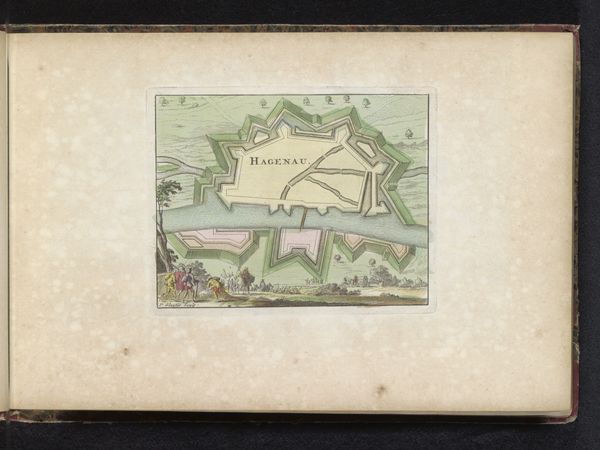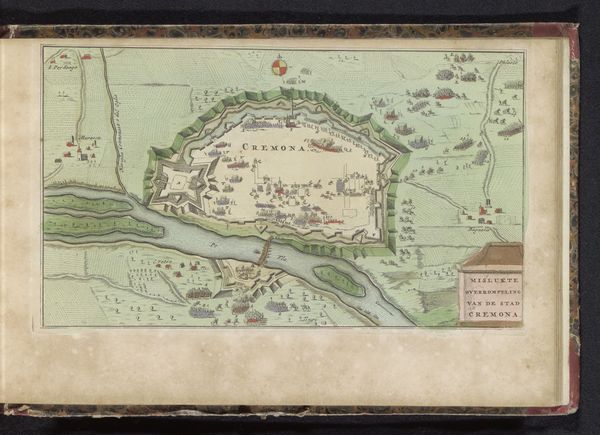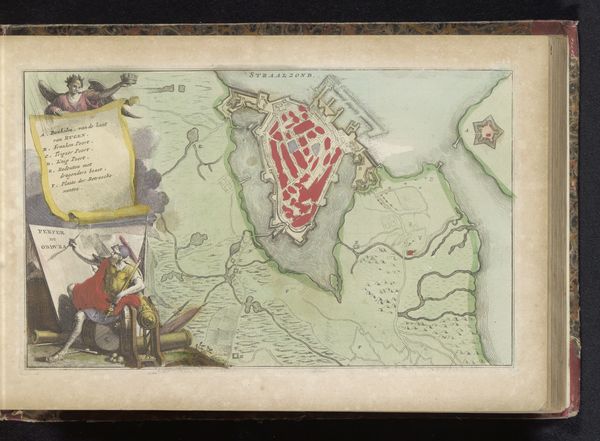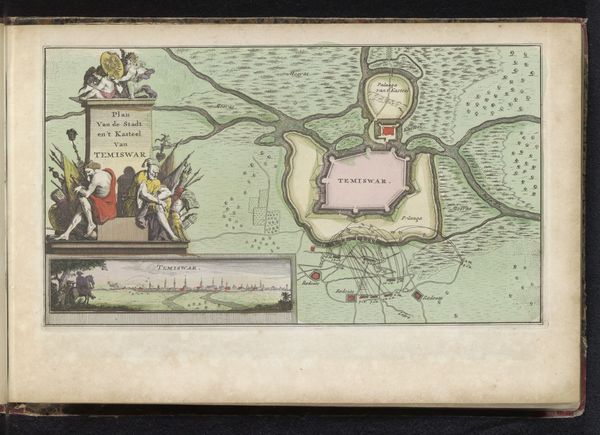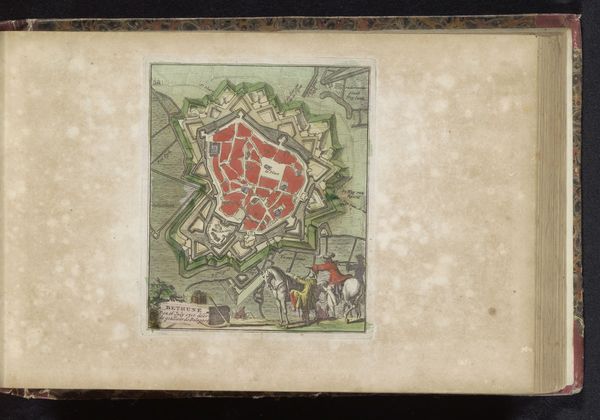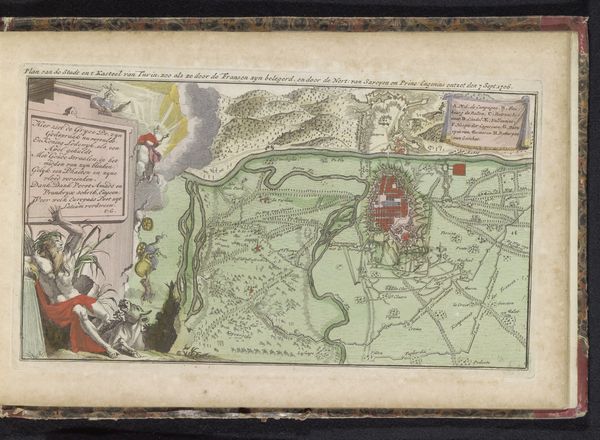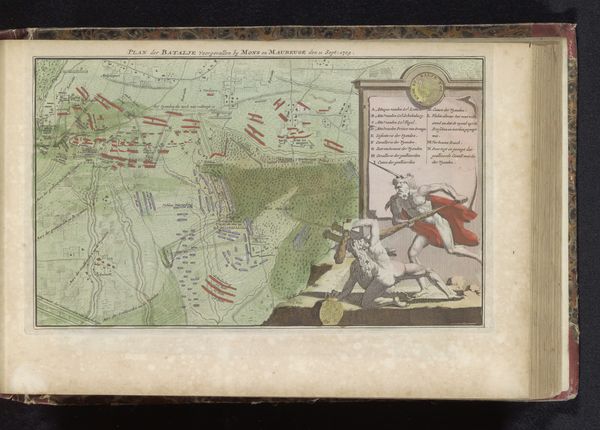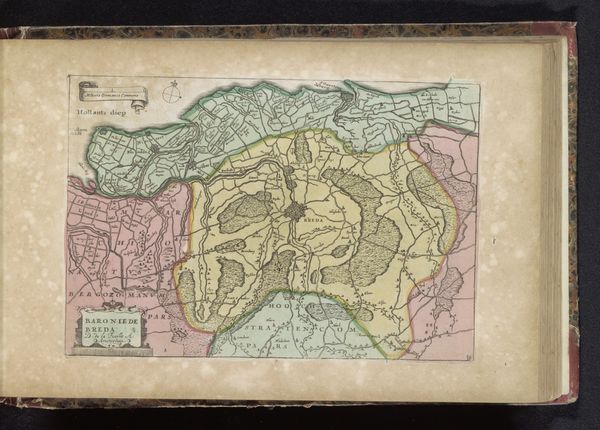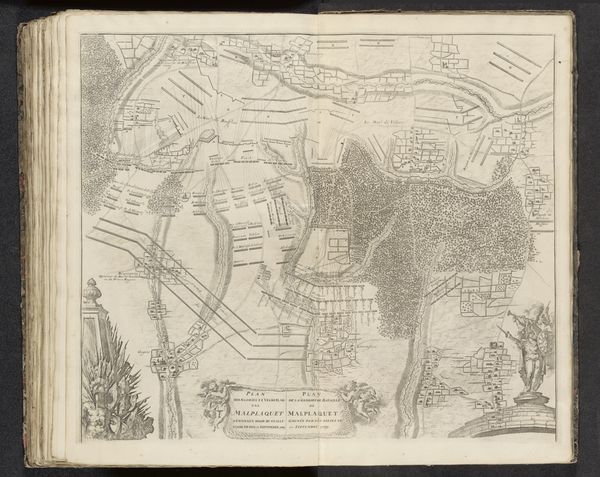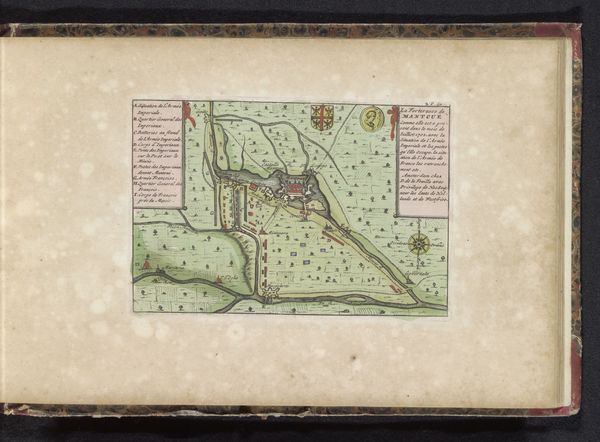
drawing, coloured-pencil, print, paper
#
drawing
#
coloured-pencil
# print
#
landscape
#
paper
#
coloured pencil
#
geometric
#
cityscape
#
history-painting
Dimensions: height 162 mm, width 280 mm
Copyright: Rijks Museum: Open Domain
Editor: This print, titled "Beleg van Bouchain, 1711," made in 1735, showcases a landscape using colored pencil on paper. There is something serene and almost cartoony about it that undercuts the depiction of war. What do you see in this piece? Curator: What immediately strikes me is how this image naturalizes the theater of war, reducing its violence to geometric form and almost bucolic detail. Look how the 'geometric' fortresses blend into the landscape, appearing almost as gardens. What kind of power dynamic do you think is at play when devastation becomes picturesque? Consider the history painting genre; does it celebrate or critique power structures? Editor: That’s a great point. It’s like the mapmakers and artists were actively detaching themselves from the realities of siege warfare, maybe sanitizing the conflict for a specific audience? Who do you think was the intended viewer? Curator: Precisely. Images like this served political purposes. They helped construct narratives around military campaigns, influencing public opinion and legitimizing colonial projects. I wonder if, by looking at the small angel, we can identify something about the artist’s stance? Editor: Hmm, that’s interesting. The winged figure near the margins of the image suggests there may be more to the story than initially meets the eye. And the contrast with the tiny soldiers huddled to the lower right. Curator: The image normalizes what is a very imbalanced set of social dynamics and weaponizes aesthetic pleasure. Next time you come across any image, no matter how benign, ask yourself whose narrative is being privileged. Editor: This has been so insightful! I hadn't thought about the implications of sanitizing violence for public consumption. I’ll definitely consider that when looking at similar historical depictions. Curator: Absolutely. Always dig beneath the surface and question the power dynamics at play. It's crucial for a deeper, more nuanced understanding of art and its role in shaping our perceptions of history.
Comments
No comments
Be the first to comment and join the conversation on the ultimate creative platform.
